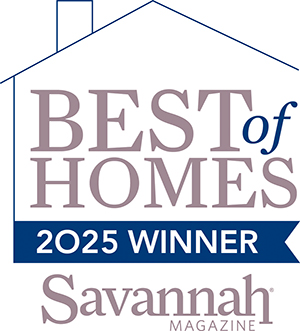7 Ways to Improve Your Storefront with Commercial Awnings
Own a storefront business? It might be stating the obvious, but you can’t get sales if you can’t get people in the door. Commercial awnings can help.
Maybe more than you think.
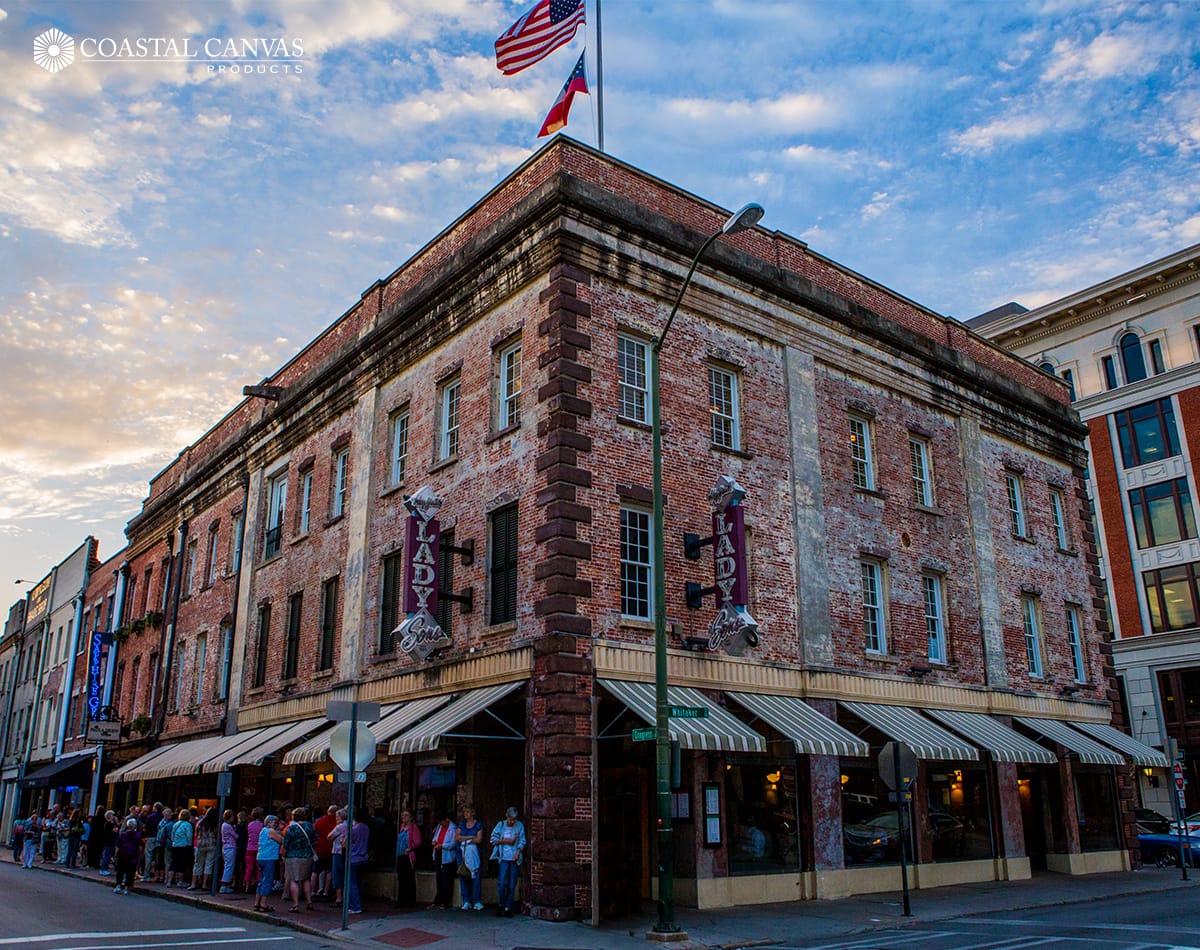
Storefront Awnings Are About More Than Function
You may have only thought about storefront awnings in terms of function. It’s true that the cover they provide over the front door and other passageways is useful.
But we encourage our small business customers to go further, to think about commercial awnings as a part of your marketing strategy.
It is an investment that gets trackable results. Door swings should increase with a great set of awnings compared to no awnings or lackluster ones.
And that means more opportunities to sell.
To show you what we mean, we’ve made this list of 7 ways to improve your storefront with commercial awnings.
1. Provide cover on a rainy day.
Think about your awning’s function in terms of customer experience.
Your reasons for installing your commercial awnings may be limited to the basics:
- Fitting in, doing it because your business neighbors have awnings.
- Sending rainwater runoff out to the street so it drains properly.
- Keeping the walk dry so people don’t slip.
But the function of your awnings are also about creating an experience. Imagine walking down the street with a date, a few friends or family. It starts to rain. What do you do?
You look for cover under an awning. You look into the store. It looks inviting enough. Why not step inside and check it out …
That’s basic customer experience thinking. The next step is to think through other reasons they might want to come your way - rain or shine.
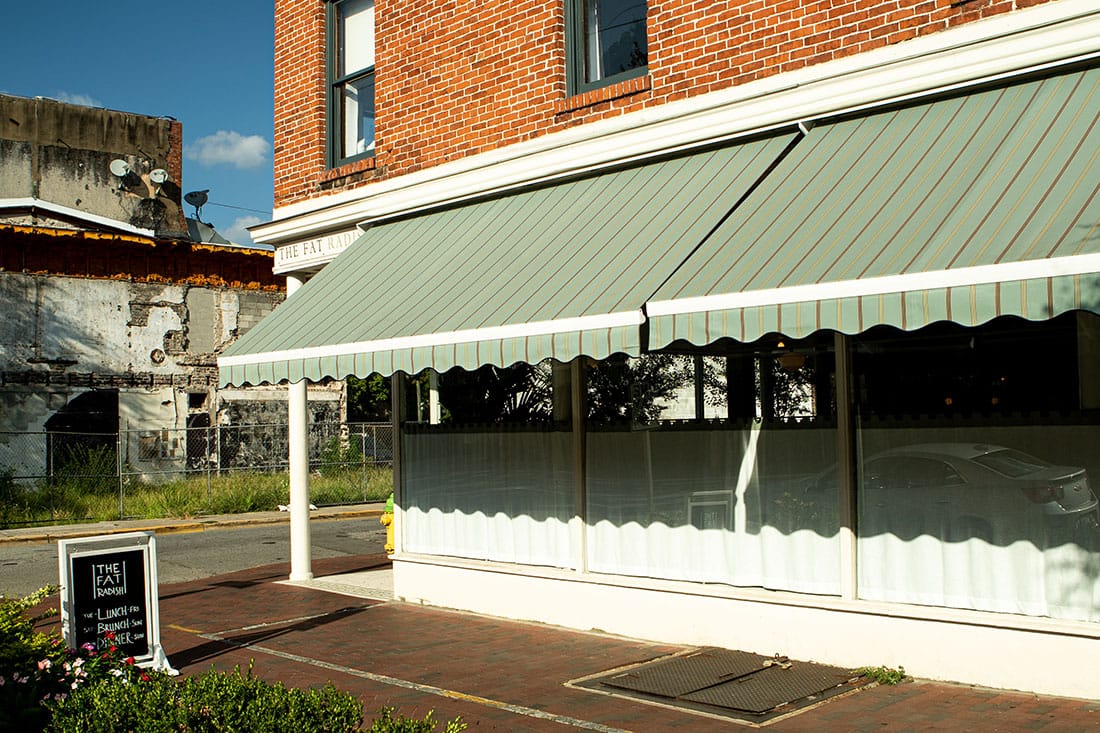
2. Use it to tell people who you are.
Storefront awnings make for excellent signage.
Many businesses have a solid color or simple stripes for their awning fabric or blank aluminum. This is a missed opportunity!
You want to have as much clear signage as possible to tell passersby who you are, what you sell, and why they should choose your store.
Incorporating your business name and logo on your awnings accomplishes all three:
- It helps people who are looking for you find you easily (before giving up and going elsewhere).
- Good logo design implies the product and informs people what it is you sell.
- And just having a strong logo proudly displayed on the awning suggests professionalism and a quality product.
You might think the sign on the door is sufficient, but the awning is a larger, bolder canvas (actual canvas or metal canopy) on which to paint the image you want to convey.
3. Stop repelling people with it.
Old, dingy awnings with branding mistakes discourage people from trying you out.
A few years ago, FedEx conducted a survey about consumer response to signage. The results were eye-opening.
- Quality matters: 68% of consumers believe a store’s signage (read: storefront awnings) reflects the quality of products or services.
- Quantity matters: On average, consumers think you should have not one, but 2 or 3 signs around the storefront to catch their attention.
But the real kicker, the thing you should worry about if you’re not sure your awnings are up to snuff, is this:
- Lack of quality repels: 52% of consumers are less willing to enter a store with misspelled or poorly-made signs (read: commercial awnings).
This means things you might not think about, like grammar (are you sure that apostrophe is in the right place?), logo alignment (is it really centered?), text size (is it legible?) and color contrast (is the lettering visible?) are extremely important.
Making these mistakes on your commercial awning could cost you half your clientele, so take care to get it right.
4. Create an emotional response with it.
Color is a powerful tool to encourage people to feel the way you want them to about you.
As we’ve written about before, it’s a good idea to consider color psychology as you’re choosing the colors for your storefront awnings.
- Red elicits hunger, action.
- Blue is associated with health and safety.
- Pink has a soothing effect.
- Green is associated with nature.
- Orange suggests a bargain.
You want to be careful with certain colors, like yellow. Too much can be a real turnoff to most people. And too much white or grey is just plain boring by itself.
Do your products or services make people feel safe and calm? Do they get people excited, encourage reconnecting with nature, or ease distress? Think about how color communicates that and choose accordingly.
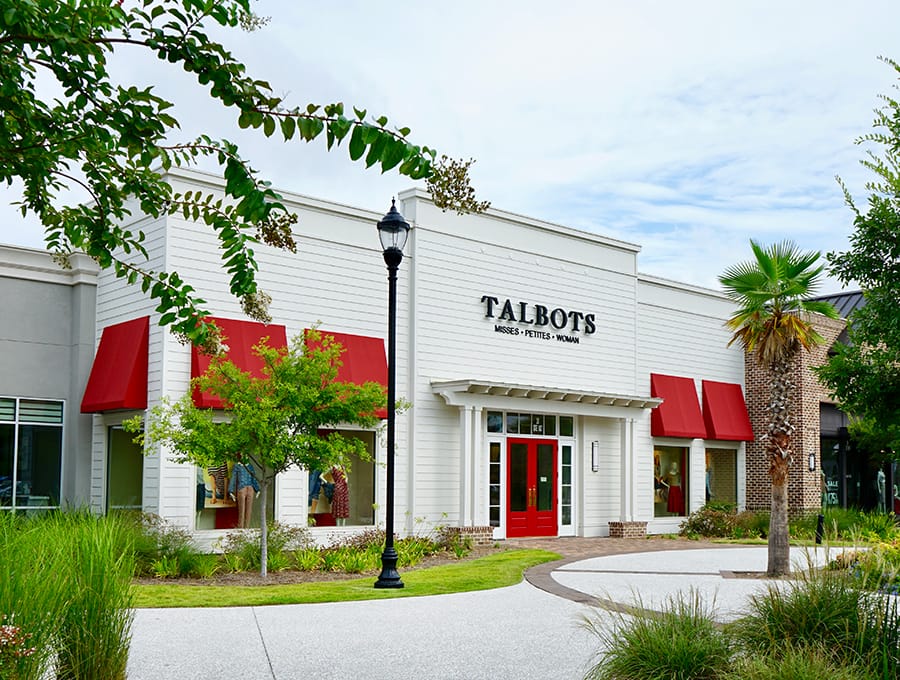
5. Make it distinct, but familiar.
Don’t copy successful businesses, but do take note of their approach to branding.
As much as you might want to be a pioneer and encourage people to try something new, it’s extremely difficult to get human beings to do that. Most prefer what’s familiar.
Breaking New Ground Is Expensive
Groundbreaking brands like Apple and Starbucks spent a lot of time and money getting people to change the way they live their lives. It paid off for them. Everybody today (it seems) has an iPhone in their pocket and a Starbucks drink in their hand.
But most small businesses don’t have the time or the money to burn trailblazing.
Stick Close to the Norm ...
Your job is to give customers something familiar enough that they’re comfortable trying you out, but distinct enough that they will choose you instead of your competition.
Look at the storefront awnings your strongest competitors are using. Take note of the color scheme, the logo design, the size of the awning and other signage.
It’s a working formula. Use it as a starting point, and adapt it.
… But Don’t Copy Everybody Else
Just be careful not to be a copycat.
For example, if you sell coffee, don’t try to make your shop look like Starbucks. A green awning with a circular white logo sporting a vaguely maritime figure would be a turnoff at best. At worst, it could get you sued!
Instead, look at the independent coffee shop down the street that’s doing well.
- If they’re using blue, maybe use a different shade, or something near it on the color wheel.
- Make your logo distinct but displayed at a similar size.
- Choose a similar font if it’s appropriate.
This is how you walk the line between familiar, but distinct. This is how you make people feel comfortable giving you a try.
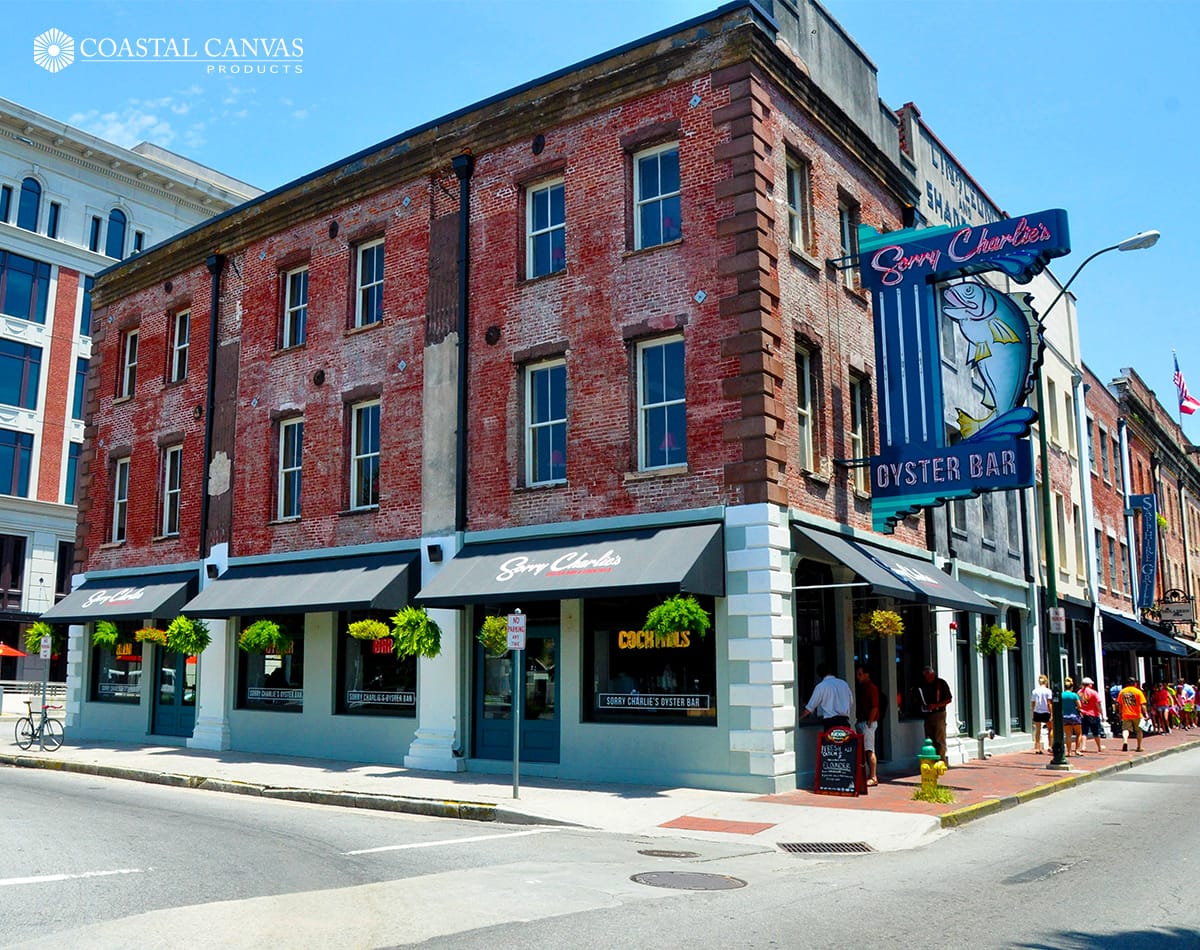
6. Communicate shared values with it.
Your commercial awning is an opportunity to subtly convey affinity with your customers.
Two 2017 studies show there is a lot of opportunity in communicating values.
- In a study on corporate social responsibility, Cone Communications found that 63% of Americans want businesses to take the lead to drive positive social change.
- And an Edelman Earned Brand study found 50% of consumers are “belief-driven” buyers, meaning they prefer doing business with those who share their values.
These data suggest an opportunity both to do good business and do some good in the world at the same time.
We’re not here to tell you what values you should have. The point here is that you do have values, and being open about them can really help attract your ideal customers.
How can you convey an affinity with your customer’s values in your storefront awnings?
- Religious symbology.
- Family iconography.
- Environment iconography (i.e. green leaf).
- A brief “we support” statement.
The point is, think about ways to attract like-minded people in your commercial awning design.
Just be careful to keep it as positive as possible. To suggest you support a value in a way that implies you’re against another value your customers cherish would be bad for business!
7. Put a sales associate underneath it.
A welcoming face goes a long way toward encouraging people to come inside.
Some common types of businesses that use their commercial awnings for this purpose include:
- Restaurants and hotels with valet service.
- Theaters with street access to the box office.
- Bars and clubs with bouncers present to check ID.
But all kinds of storefront businesses selling anything from shoes and apparel to jewelry, to electronics, to toys, you name it, can benefit from having someone stationed outside.
We’ve all seen the sign twirlers coaxing drivers into parking lots from the street. The same principle can apply to foot traffic.
A friendly sales associate standing under your awning can not only encourage people to stop by with a simple smile, eye contact and perhaps free samples. They can also enhance the customer experience by answering questions, opening the door, and escorting people inside.
To pull this off, you do need to train your sales associates well. They need to have a sense of how to represent your style, and how to make people feel welcome rather than pressured.
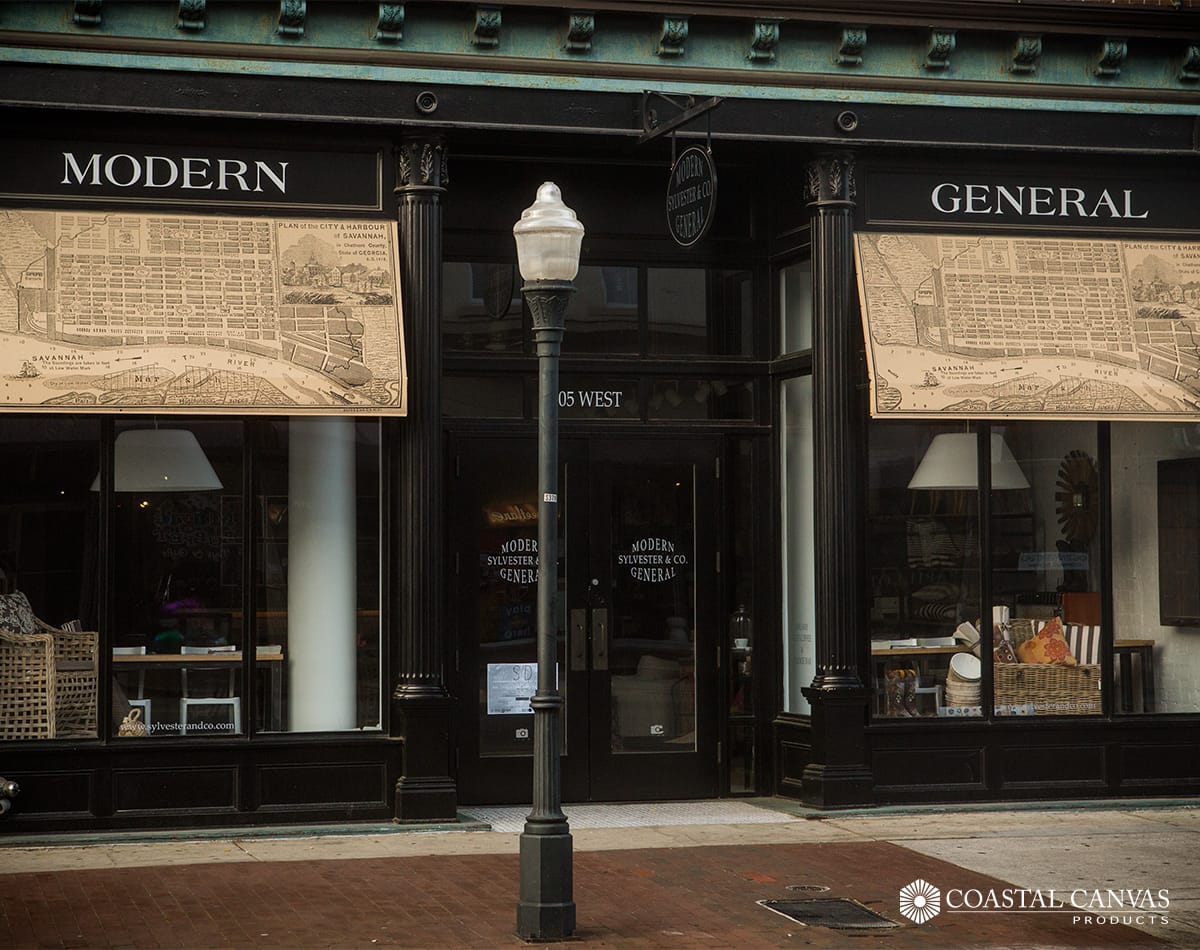
Work with a Commercial Awnings Installer Who Does It All
Installers of storefront awnings are a dime a dozen. What sets your experience apart with the most experienced is that they understand what you’re really trying to do: get business!
That’s what you can expect with Coastal Canvas. We’re more than an installer. We provide:
- Storefront Consultation
- Custom Awning Design
- Graphics & Branding
- Signage
- Fabrication
- Assistance Obtaining Permits
- Installation
- Quality Control
In other words, we take the time to learn about you and your business goals. We take ownership in the entire process from start to finish to get everything just right.
It all starts with an on-site consultation. Click the button below to schedule your appointment.
Coastal Canvas serves these and surrounding areas:
- Savannah, GA
- Hilton Head Island, SC
- Bluffton, SC
- Palmetto Bluff
- Beaufort, SC
- Richmond Hill, GA
- St. Simon’s Island, GA



